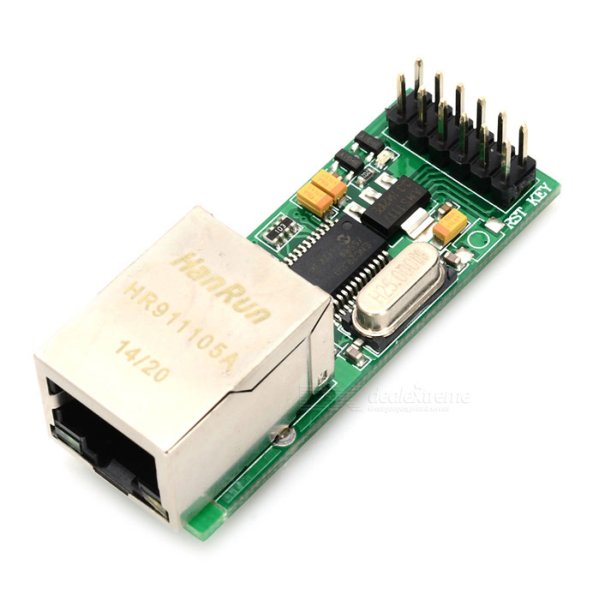
1. Introduction
The interface that is required is an Ethernet interface to hook onto such an infrastructure. The interface needs to be low cost and easy to implement so that only a minimal additional cost is involved. Any intelligent embedded system will have at least one 8/16/32 bit microprocessor along with necessary hardware for implementing its features. There can be more than one processor in the system. We are going to treat that part as a black box. What is of interest to us is the interface with one of these controlling processors with an Ethernet controller. The following discussions on hardware and software requirements are thus going to focus on the requirements for implementing the embedded Ethernet only.
2. Hardware
Hardware required is a suitable Ethernet controller and an Ethernet connector. As a basic minimum requirement, the controller needs to supply an Ethernet packet reception and transmission interface. Size, power and cost should be minimal. However, the choice would be guided by how sophisticated an interface you need. Quite often part of the protocol processing can be handled by a sophisticated controller. Costs will go higher of course. Thus, this is a design tradeoff that would depend of other constraints of the system design. As long as you have IC with 2x Tx pins and 2x Rx pins it is enough for implementing the Ethernet connection. The Ethernet connector is a RJ 45 of course. However, what would be preferred is one with magnetics and LEDs integrated. On the transmission side, you need a transformer turns ratio of 1: 2.5 and on the reception side you need 1:1 turns ratio. Two kinds of activities are usually required. One is the net is connected and the other is to indicate periodic activity.
3. Software

